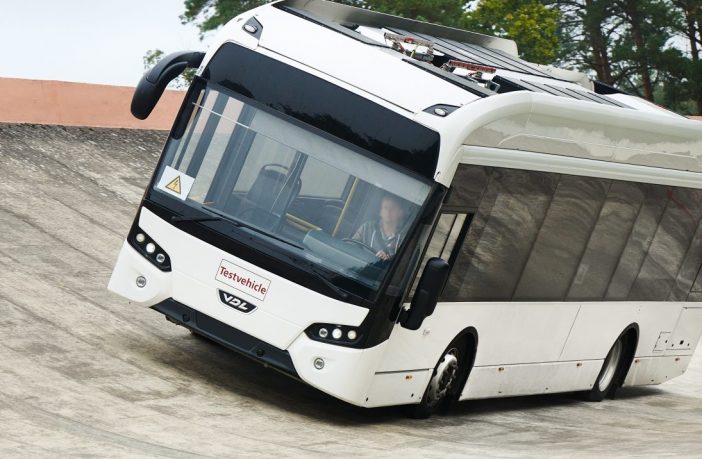According to Continental, car and commercial vehicle manufacturers are not alone in having to change their processes in response to the rise in electric mobility. Tire manufacturers also need to come up with new development concepts to accommodate their specific demands.
It notes that one particularly challenging field is the development of tires for electric urban buses. To address this, Continental and electric bus manufacturer VDL Bus & Coach have pooled their expertise and jointly developed initial prototype tires, which are currently being tested at Continental’s Contidrom proving grounds.
“As with all electric vehicles, these bus tires are exposed to higher torque when moving off and accelerating,” explained Ben Hudson, automotive engineer at Continental Truck Tires.
However, he noted that with tires for electric urban buses there are other considerations involved, above and beyond those experienced in previous EV projects: “In downtown traffic in particular, vehicles need to run very quietly, so that the comfort offered by quiet electric drive isn’t diminished by loud road-tire noise.”
Additionally, the deceleration of electric buses in urban traffic is a key factor in the energy recovery process. Consequently, tires for electric buses have to cope with tougher requirements than their counterparts fitted to buses with combustion engines.
“At the same time, they need to deliver the same mileage and meet the same safety standards as bus tires for conventional drive systems,” added Hudson. “We are up against new requirements here, but obviously we’re not going to accept any compromises in terms of robustness or braking performance. Safety takes top priority for us.”
Currently, the tires on the VDL vehicles at the Contidrom are built by Continental’s prototyping department in Hanover-Stöcken and feature hand-carved tread patterns. Hudson pointed out that, as a rule, the tire development cycle from initial prototype to volume production takes three to five years. For the e-bus tires Continental aims to shorten that cycle.
“When developing this concept tire, we’re not restricted by what has gone before in previous generations of tires,” says Hudson. “That gives us the freedom to try out entirely new concepts and ideas. If these prove successful, we’ll put them into practice very quickly and feed them into the development of the next line of tires.”


